This report is closed.
Author: hilduryr@matis.is
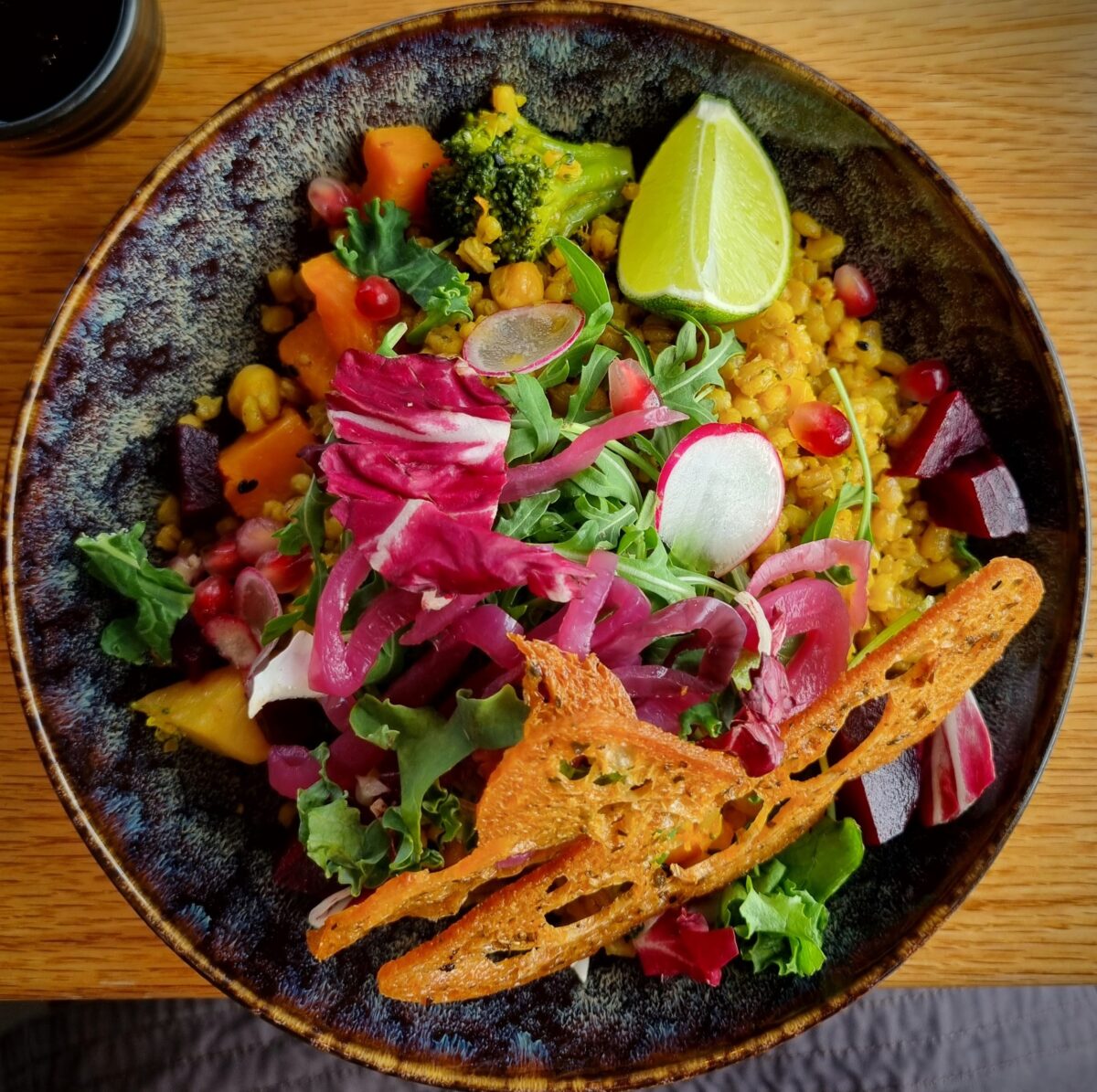
Annað hvert ár eru haldnar á Norðurlöndum ráðstefnur ”Nordic Sensory Workshop“ sem fjalla um skynmat og neytendarannsóknir og hefur Matís tekið þátt í undirbúningi þeirra.
Næsta ráðstefna sem er sú 20. í röðinni verður haldin í Helsinki dagana 22.-23. apríl 2026 og ber hún yfirskriftina ”Senses, Systems, and Sustainability”. Fjallað verður um þrjá samtengda þætti skynmats- og neytendafræða:
- Skynjun, – hvernig skynjun mótar upplifun af gæðum vöru, val neytenda og matarupplifun þeirra, og hvernig hægt er að hanna aðlaðandi vörur fyrir ólíka neytendahópa;
- Kerfi, – hvernig þættir innan matvælakerfis, svo sem hráefni, framleiðsla, vinnsla og neysla móta skynjun;
- Sustainability, – hvernig skynmatsfræðum er beitt til að styðja við ábyrga nýtingu auðlinda, samþykki neytenda þegar kemur að nýjum hráefnum eða innihaldsefnum, og efla nýsköpun í átt að sjálfbærari matvælum.
Nordic Sensory Workshop leggur áherslu á virka þátttöku, samtal og tengslamyndun, og er ráðstefnan bæði ætluð fagfólki í matvælaiðnaði og vísindafólki á þessu sviði og er kjörinn vettvangur fyrir iðnaðinn og vísindafólk til að hittast og efla samskipti á þessu sviði.
- Frekari upplýsingar um ráðstefnuna má finna hér: https://blogs.helsinki.fi/nordic-sensory-workshop/
- Frekari upplýsingar um efni, mikilvægar dagsetningar og skráningu má finna hér: https://blogs.helsinki.fi/nordic-sensory-workshop/workshop-topics/
Íslensk matvælafyrirtæki eru hvött til að taka þátt, sækja sér þekkingu, byggja tengsl og taka þátt í virkum umræðum með fræðasamfélagi og leiðandi matvælafyrirtækjum á Norðurlöndum.
Ljósmynd: Kolbrún Sveinsdóttir
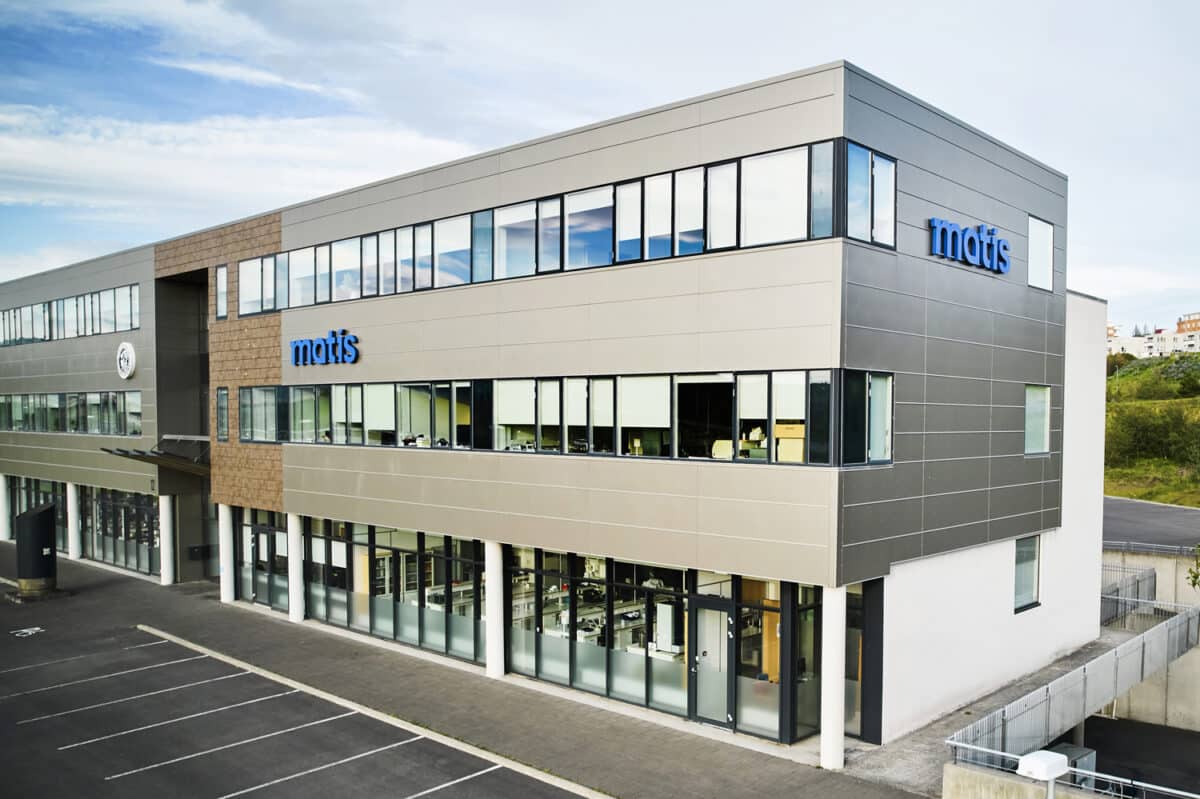
Matís leitar eftir metnaðarfullum verkefnastjóra til starfa í faghópi Erfða.
Main tasks and responsibilities:
Framkvæmd og stjórnun þjónustuverkefna á sviði erfðafræði, einkum:
- Fjölbreyttar greiningar á búfénaði, einkum sauðfé, hrossum og kúum, sem fela í sér skimun fyrir erfðaþáttum sem tengjast sjúkdómum, frjósemi, o.fl.
- Tegunda- eða upprunagreining matvæla og annarra lífsýna.
- Erfðagreiningar sem nýttar eru til ákvörðunar á uppruna strokulaxa.
Öflun, þróun og innleiðing nýrra þjónustu- og rannsóknaverkefna.
Framkvæmd rannsóknaverkefna á sviði erfðafræði, einkum grunnrannsókna sem varða líf í hafi og vötnum.
Educational and qualification requirements
- Menntun í erfðafræði, lífefnafræði, líffræði eða skyldum greinum er skilyrði.
- Reynsla af rannsóknum og/eða þjónustugreiningum á sviði erfðafræði eða skyldum greinum er skilyrði.
- Mikil tæknileg færni á sviði erfðafræði er kostur, þ.e. þekking og reynsla af notkun viðkomandi aðferða og tækja.
- Jákvætt viðmót og lipurð í mannlegum samskiptum.
- Samstarfshæfni og sveigjanleiki.
- Sjálfstæð, skipulögð og nákvæm vinnubrögð.
- Frumkvæði og faglegur metnaður.
- Góð almenn íslensku- og enskukunnátta í ræðu og riti.
- Góð almenn tölvukunnátta.
Employment rate is 100%. The person concerned will work at Matís' laboratory at Vínlandsleið 12, Reykjavík.
Hlutverk Matís er að efla samkeppnishæfni íslenskra afurða og atvinnulífs og tryggja matvælaöryggi, lýðheilsu og sjálfbæra nýtingu auðlinda. Hjá Matís starfar um 100 manna öflugur hópur starfsfólks sem vinnur að þessum markmiðum með rannsóknum, nýsköpun og þjónustu.
Applications must be accompanied by a detailed CV and cover letter.
The application deadline is until 25. janúar
Upplýsingar veitir Björn Þór Aðalsteinsson, fagstjóri erfðahóps, bjornth@matis.is.

Fimmtudaginn 22. janúar 2026 ver Antoine Moenaert doktorsritgerð sína í líffræði við Verkfræði- og náttúruvísindasvið Háskóla Íslands. Ritgerðin ber heitið Aðlögun efnaskiptaferla til framleiðslu verðmætra lífefna / Cell factory and cell-free conversions of brown seaweed to valuable compounds by metabolic engineering.
The doctoral defense takes place in Hátíðarsal aðalbyggingar Háskóla Íslands og hefst kl. 13:00
Opponents:
Dr. Oddur Þór Vilhelmsson, prófessor við Auðlindadeild Háskólans á Akureyri.
Dr. Magnus Carlquist, prófessor við Háskólann í Lundi, Svíþjóð.
Aðalleiðbeinandi: Dr. Guðmundur Óli Hreggviðsson, prófessor við Líf- og umhverfisvísindadeild Háskóla Íslands og stefnumótandi sérfræðingur hjá Matís.
Einnig í doktorsnefnd:
Dr. Ólafur Héðinn Friðjónsson, fagstjóri í Líftækni hjá Matís, Ísland.
Dr. Eva Nordberg Karlsson, prófessor við Háskólann í Lundi, Svíþjóð.
Doktorsvörn stýrir: Dr. Snæbjörn Pálsson, prófessor og deildarforseti Líf- og umhverfisvísindadeildar HÍ.
Abstract
Brúnþörungar, sem vaxa við Íslandsstrendur, hafa vakið athygli og áhuga sem hráefni fyrir líftækniiðnað, sérstaklega í ljósi minnkandi aðgengis að jarðefnaeldsneyti og aukinnar þarfar fyrir sjálfbærar lausnir í umhverfismálum. Brúnþörungar eru ríkir af sykrum og hafa þann kost fram yfir landplöntur að þeir krefjast hvorki ræktanlegs lands, ferskvatns, né áburðar. Jafnframt framleiða þeir meiri lífmassa á skemmri tíma en landplöntur.
Markmið þessa rannsóknarverkefnis var að nýta brúnþörunga sem hráefni fyrir örverur og ensím og framleiða með hjálp efnaskiptaverkfræði og erfðatækni verðmætar afurðir úr þörungasykrum.
Verkefninu var skipt í fjóra hluta. (1) Thermoanaerobacterium islandicum AK17, loftfirrt hitakær baktería, var þróuð sem frumuverksmiðja fyrir framleiðslu á etanóli. (2) Með erfðabreytingum tókst að fella út efnaskiptaferla og beina flæði orku og kolefnis að etanólframleiðslu. Nýr, breyttur stofn, AM6, framleiddi etanól á skilvirkan hátt ( 95% af fræðilegu hámarki) úr mannitóli, glúkósa og fásykrum í þörungahýdrólýsati. (3) Þróuð var aðferð til að framleiða 2-Keto-3-deoxygluconate (KDG), sem er milliefni í framleiðslu ýmissa verðmætra efna, úr alginati og lamínarin sykrum með hjálp hitakærra ensíma. (4) Ofangreindir framleiðsluferlar krefjast niðurbrots viðkomandi sykra úr brúnþörungum. Í tengslum við slíka niðurbrotsferla var nýtt ensím (laminarinasi) sem brýtur niður beta-glúkön í smásykrur, tvísykrur og glúkósa, framleitt með erfðatæknilegum aðferðum og eiginleikar þess rannsakaðir.
Í heild sýna niðurstöður verkefnisins að með því að beita efnaskiptaverkfræði og erfðatækni geta brúnþörungar nýst sem sjálfbært hráefni í líftækni. Þannig getur verkefnið stuðlað að innleiðingu aðferða til að draga úr notkun jarðefnaeldsneytis og þar með þróun lífhagkerfisins, og sjálfbærari framtíð.
About the doctoral dissertation
Antoine Moenaert er fæddur í Ennevelin sem er lítið þorp í norður Frakklandi. Þar ólst hann upp með tveimur systrum sínum, Cecile and Emilie. Antoine lauk masters gráðu í Líftækni við Háskólann í Marseille. Að námi loknu starfaði hann í tvö ár í Basel í Sviss. Þá flutti hann til Íslands og hóf að starfa hjá Matís ohf við rannsóknir á hitakærum örverum. Eftir þriggja ára dvöl og starf hjá Matís hóf Antoine doktorsnám við Háskóla Íslands.
Í þessari skýrslu eru teknar saman niðurstöður vöktunar á óæskilegum efnum í ætum hluta sjávarfangs 2025. Vöktunin hófst árið 2003 fyrir tilstuðlan þáverandi Sjávarútvegsráðuneytis, núverandi Matvælaráðuneytið, og sá Matís ohf. um að safna gögnum og útgáfu á skýrslum vegna þessarar kerfisbundnu vöktunar á tímabilinu 2003-2012. Vegna skorts á fjármagni í þetta vöktunarverkefni var gert hlé á þessari mikilvægu gagnasöfnun sem og útgáfu niðurstaðna á tímabilinu 2013-2016. Verkefnið hófst aftur í mars 2017 en vegna fjárskorts nær það nú eingöngu yfir vöktun á óæskilegum efnum í ætum hluta sjávarfangs úr auðlindinni sem ætlað er til manneldis, en ekki fiskimjöl og lýsi fyrir fóður. Af sömu ástæðu eru ekki lengur gerðar efnagreiningar á PAH og PBDE efnum.
Markmiðið með verkefninu er að sýna fram á stöðu íslenskra sjávarafurða m.t.t. öryggi og heilnæmis og hægt að nýta gögnin við gerð áhættumats á matvælum til að tryggja hagsmuni neytenda og lýðheilsu. Verkefnið byggir upp þekkingargrunn um magn óæskilegra efna í efnahagslega mikilvægum tegundum og sjávarafurðum, það er skilgreint sem langtímaverkefni þar sem útvíkkun og endurskoðun er stöðugt nauðsynleg.
Almennt voru niðurstöðurnar sem fengust 2025 í samræmi við fyrri niðurstöður frá árunum 2003 til 2012 sem og 2017 til 2024. Niðurstöðurnar sýndu að íslenskar sjávarafurðir innihalda óverulegt magn þrávirkra lífrænna efna s.s. díoxín, PCB og varnarefni. í þessari skýrslu voru hámarksgildi Evrópusambandsins (ESB) fyrir díoxín, díoxínlík PCB (DL-PCB) og ekki díoxínlík PCB (NDL-PCB) í matvælum samkvæmt reglugerð nr. 2023/915 notuð til að meta hvernig íslenskar sjávarafurðir standast kröfur ESB. Niðurstöður ársins 2025 sýna að öll sýni af sjávarafurðum til manneldis voru undir hámarksgildum ESB fyrir þrávirk lífræn efni og þungmálma. Þá reyndist styrkur svokallaðra ICES6-PCB efna vera lágur í ætum hluta sjávarfangs, miðað við hámarksgildi ESB samkvæmt reglugerð nr. 2023/915. Sömuleiðis sýndu niðurstöðurnar að styrkur þungmálma, t.d. kadmíum (Cd), blý (Pb) og kvikasilfur (Hg) í íslenskum sjávarafurðum var alltaf undir hámarksgildum ESB.
_____
This report summarises the results obtained in 2025 for the screening of various undesirable substances in the edible part of Icelandic marine catches. The main aim of this project is to gather data and evaluate the status of Icelandic seafood products in terms of undesirable substances, and the data can be utilised to estimate the exposure of consumers to these substances from Icelandic seafood and risks related to public health. The surveillance programme began in 2003 and was carried out for ten consecutive years before it was interrupted in 2013. The project was revived in March 2017 to fill in knowledge gaps regarding the level of undesirable substances in economically important marine catches for Icelandic export. Due to financial limitations the monitoring now only covers screening for undesirable substances in the edible portion of marine catches for human consumption and not feed or feed components. The limited financial resources also required the analysis of PAHs and PBDEs to be excluded from the monitoring, providing somewhat more limited information than before. However, it is considered a long-term project where extension and revision are constantly necessary.
In general, the results obtained in 2025 were in agreement with previous results on undesirable substances in the edible part of marine catches obtained in the monitoring years 2003 to 2012 and 2017 to 2024.
In this report from the monitoring programme, the maximum levels for dioxins, dioxin-like PCBs and non-dioxin-like PCBs in foodstuffs (Commission Regulation (EU) 2023/915) were used to evaluate how Icelandic seafood products measure up to limits currently in effect.
The results show that in regard to the maximum levels set in the regulation, the edible parts of Icelandic seafood products contain negligible amounts of dioxins, dioxin like and non-dioxin-like PCBs. In fact, all samples of seafood analysed in 2025 were below EU maximum levels.
Furthermore, the concentration of ICES-6-PCBs was found to be low in the edible part of the marine catches, compared to the maximum limits set by the EU (Commission Regulation (EU) 2023/915). The results also revealed that the concentration of toxic trace elements, i.e., cadmium (Cd), lead (Pb) and mercury (Hg) in the edible part of marine catches were below the relevant maximum limits set by the EU in all samples.
View report
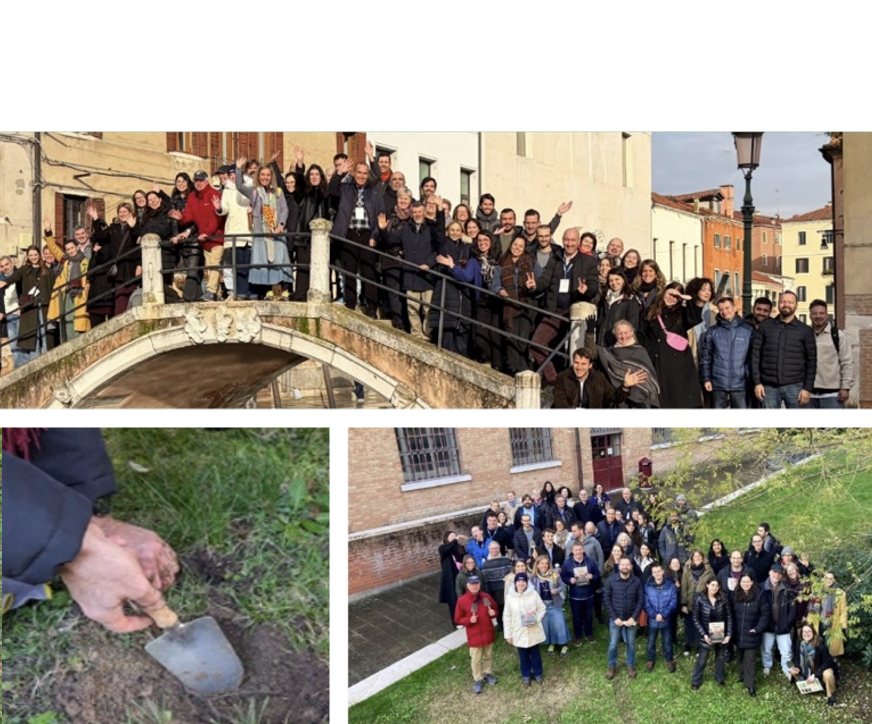
Dagana 1.–5. desember fór fimm manna hópur frá Íslandi til Feneyja á Ítalíu til að taka þátt í árlegum verkefnafundi NATALIE. Þar komu saman vísindamenn víðs vegar frá Evrópu til að fara yfir stöðu og framgang verkefnisins og deila reynslu milli rannsóknasvæða.
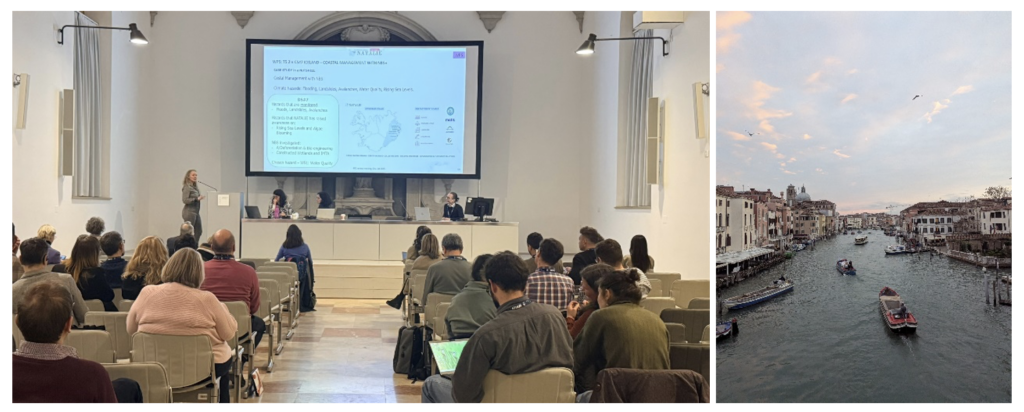
Verkefninu er ætlað að þróa náttúrumiðaðar lausnir sem auka eiga viðnámsþrótt svæða gegn áhrifum loftslagsbreytinga. Verkefnið er til fimm ára og er styrkt af Horizion áætlun Evrópusambandins. Verkefnið sameinar yfir 40 samstarfsaðila frá 13 löndum. Fulltrúar Matís og Austurbrúar sátu fundinn fyrir hönd íslenska rannsóknasvæðisins á Austurlandi þar sem verkefnið er framkvæmt í nánu samstarfi við sveitarfélög, stofnanir, atvinnulíf og aðra hagaðila.
“Aðalfundur NATALIE verkefnisins í Feneyjum var vettvangur þess að samræma stöðu verkefnisins, efla skilning okkar og lærdóm á milli rannsóknarsvæða og ræða næstu skref í innleiðingu og þróun náttúrumiðaðra lausna sem unnið er með í verkefninu. Út úr þessu fáum við betri yfirsýn á stöðu verkefnisins til að halda áfram með þróun og innleiðingu náttúrumiðaðra lausna í almannaþágu.” Anna Berg Samúelsdóttir.

Einn af hápunktum fundarins var vettvangsferð að ítölsku tilvikssvæði, í Feneyjum, þar sem þátttakendur fengu að sjá hvernig náttúrumiðaðar lausnir eru nýttar í sjálfbærri endurheimt og stjórnun vatnakerfa. Þar var meðal annars sýnt hvernig hægt er að hægja á vatnsrennsli, bæta vatnsbúskap og draga úr flóðahættu með aðgerðum sem vinna með náttúrulegum ferlum. Að sjá lausnir „í verki“ – og ræða bæði árangur og áskoranir – gaf dýrmæta innsýn sem nýtist í áframhaldandi vinnu á Íslandi.

Samvinna, samtal og næstu skref
Fundurinn í Feneyjum undirstrikaði mikilvægi þess að tengja saman rannsóknir, staðbundna þekkingu og framkvæmd. NATALIE er nú að hefja sitt þriðja starfsár og verður áfram lögð áhersla á að yfirfæra niðurstöður yfir í raunhæfar aðgerðir á tilvikssvæðum verkefnisins – þar á meðal á Austurlandi.
Rannsóknir og þróun á Austurlandi: vatnsgæði og þörungablómi
Austurland er eitt af átta rannsóknarsvæðum verkefnisins og þátttakendur eru Matís, Austurbrú, Green Fish og University of Exeter. Á Austurlandi er unnið að því að styrkja strandstjórnun og viðnámsþrótt samfélaga gagnvart loftslagstengdum áskorunum, með sérstakri áherslu á vatnsgæði t.a.m. auka viðnám vegna hættu á þörungablóma. Í verkefninu hefur í nánu samstarfi við hagaðila á svæðinu verið greindir helstu áhættuþættir og lagt mat á hvaða náttúrumiðuðu lausnir gætu hentað best. Þar ber helst að nefna manngert votlendi og samþætt fjölþrepa sjóeldi (IMTA), þar sem lífverur eins og þörungar og skeldýr geta bundið næringarefni og þannig dregið úr næringarefnaálagi í fjörðum.
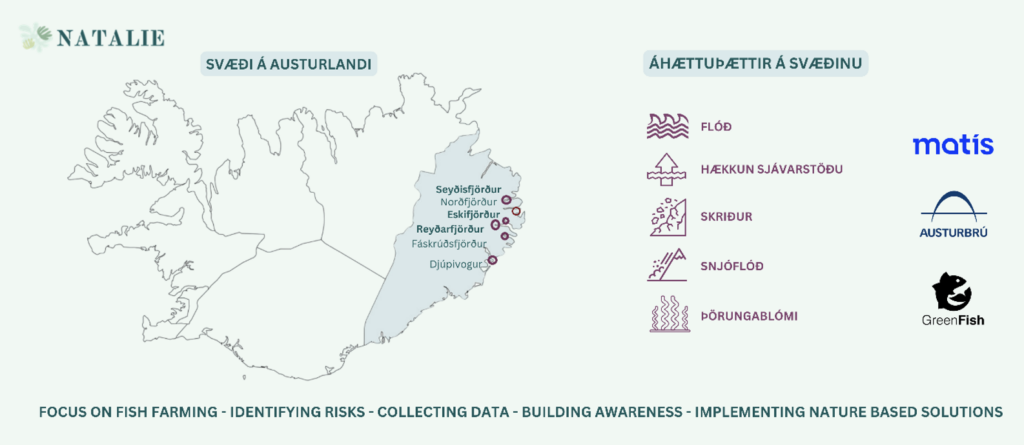
Af hverju skipta samt næringarefni í fjörðum máli í þessu samhengi?
Vöxtur þörunga ræðst af náttúrulegu samspili súrefnisaðstæðna, hitastigs, ljóss og lagskiptingar sjávar. Á Íslandi má hins vegar sjá að grunnálag næringarefna getur stafað af óhreinsuðu eða ófullnægjandi hreinsuðu fráveituvatni frá þéttbýli, og að aukinn vöxtur fiskeldis á síðustu árum hefur víða leitt til meira næringarefnaálags í fjörðum og strandvistkerfum. Hækkandi hitastig sjávar eykur síðan líkur á þörungablómgun, aukið tíðni þeirra og gert þau varanlegri en áður í kaldara loftslagi.
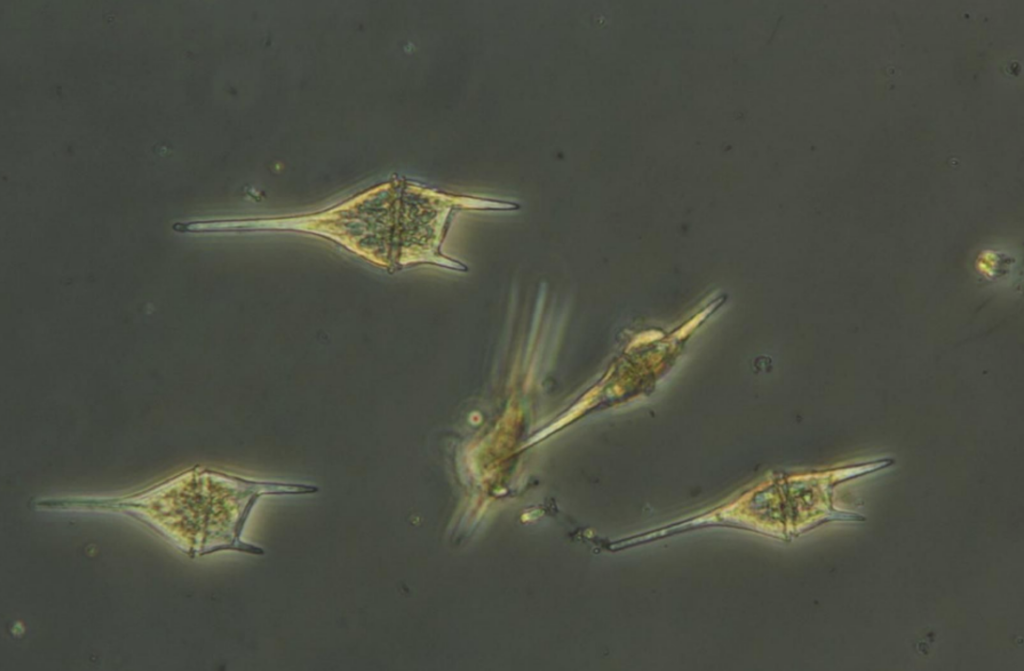
Samhliða rannsóknarvinnu sem farið hefur fram á svæðinu hefur GreenFish þróað stafrænt vöktunarkerfi sem nýtir daglegar Sentinel-3 gervihnattamyndir og reiknar cyanobacteria-vísitölu til að greina merki um þörungablóma. Kerfið getur veitt ákveðna viðvörun 2–3 dögum fyrr en hefðbundnar vatnssýnatökur og skilar meðal annars hitakortum, mælaborðsupplýsingum og tilkynningum sem styðja við betri viðbúnað og upplýsta ákvarðanatöku á svæðinu.
Náttúrumiðaðar lausnir geta dregið úr þörungablómavanda með því að binda eða fjarlægja uppleyst næringarefni úr sjó áður en þau nýtast þörungum til vaxtar. Sérstaklega getur samþætt fjölþrepa fiskeldi (IMTA) nýst vel: því lífverur, eins og þörungar og/eða skeldýr, taka upp næringarefni úr vatninu, binda þau í lífmassa, sem dregur úr næringarefnaframboði til þörungablóma. Með reglulegri vöktun og góðri strandstjórnun getur þessi nálgun stutt við betri vatnsgæði og aukið viðnámsþrótt vistkerfa.
Further information:
home page NATALIE
Project page NATALIE
Til gamans: Linkur á frétt frá síðasta ársfundi: Ársfundur Natalie á Gran Canaria – Matís
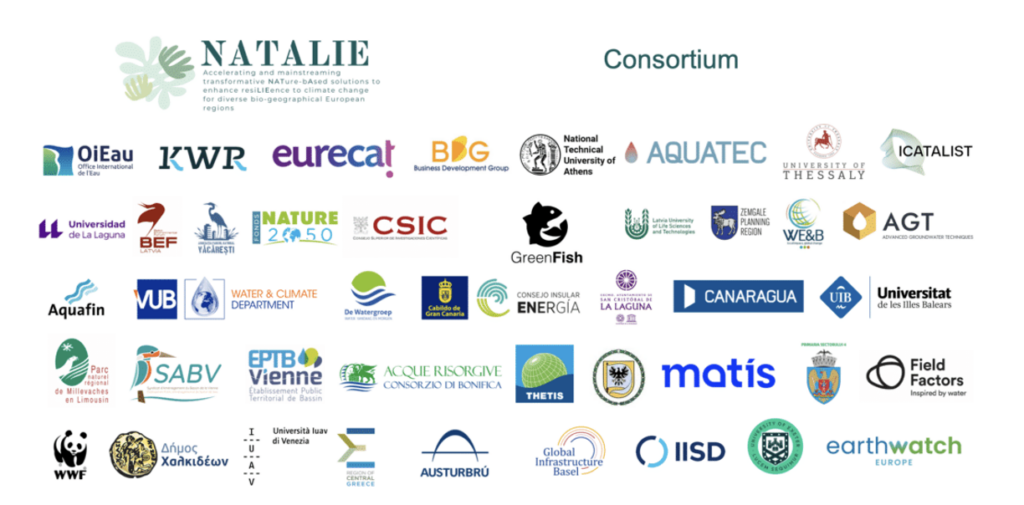
Styrkt af

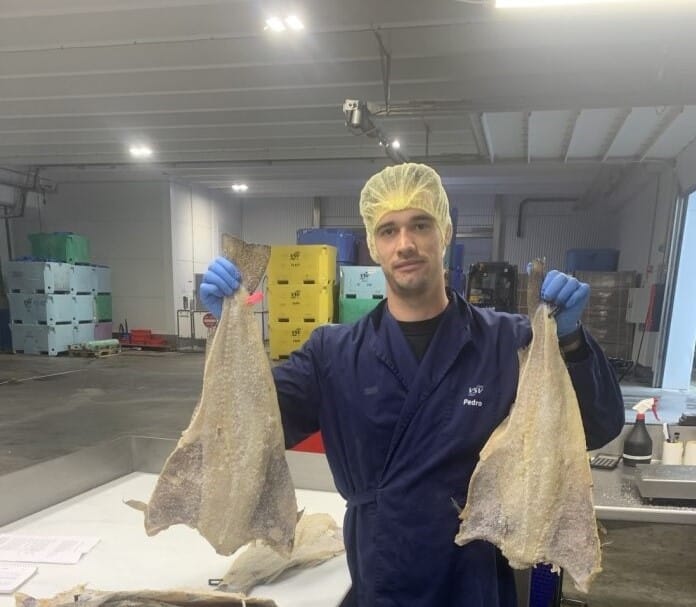
Frá 1968 þegar vatnsleiðsla var fyrst tengd á milli Vestmannaeyja og fastalandsins hafa Eyjabúar reitt sig á aðgengi að ferskvatni í gegnum leiðslur sem liggja á hafsbotni. Vestmannaeyingar og atvinnulífið á Eyjunni voru óþyrmilega minntir á það óöryggi sem felst af því að vera háðir slíkri tengingu varðandi lífsnauðsynjar 2023 þegar skemmdir urðu á leiðslunni.
Í framhaldi fjárfestu fyrirtæki á svæðinu í vatnshreinsibúnaði sem framleitt getur ferskvatn úr sjó. Vinnslustöðin í Vestmannaeyjum fjárfesti meðal annast í slíkum búnaði, og í framhaldi kom upp sú hugmynd hvort ekki væri hægt að nýta þá hliðarstrauma sem til verða við ferskvatnsframleiðsluna. En vatnshreinsistöðin síar steinefni og óhreinindi úr sjónum, þannig að eftir verður hreint vatn. Meðal þeirra steinefna sem síast frá er salt, en Vinnslustöðin er á sama tíma að flytja inn töluvert magn af salti til saltfiskframleiðslu. Það lá því beinast við að kanna möguleikann á að nýta saltpækil sem fellur til við ferskvatnsframleiðsluna fyrir saltfiskvinnslu. Vinnslustöðin fékk því Matís með sér í lið til að kanna fýsileika þess, og fengu auk þess stuðning frá LÓU sjóðnum til að fjármagna hluta af verkefninu. Markmið verkefnisins var að kanna fýsileika þess að nýta salt frá ferskvatnsframleiðslunni til saltfiskframleiðslu m.t.t. matvælaöryggis, afkasta, kostnaðar og sjálfbærni.
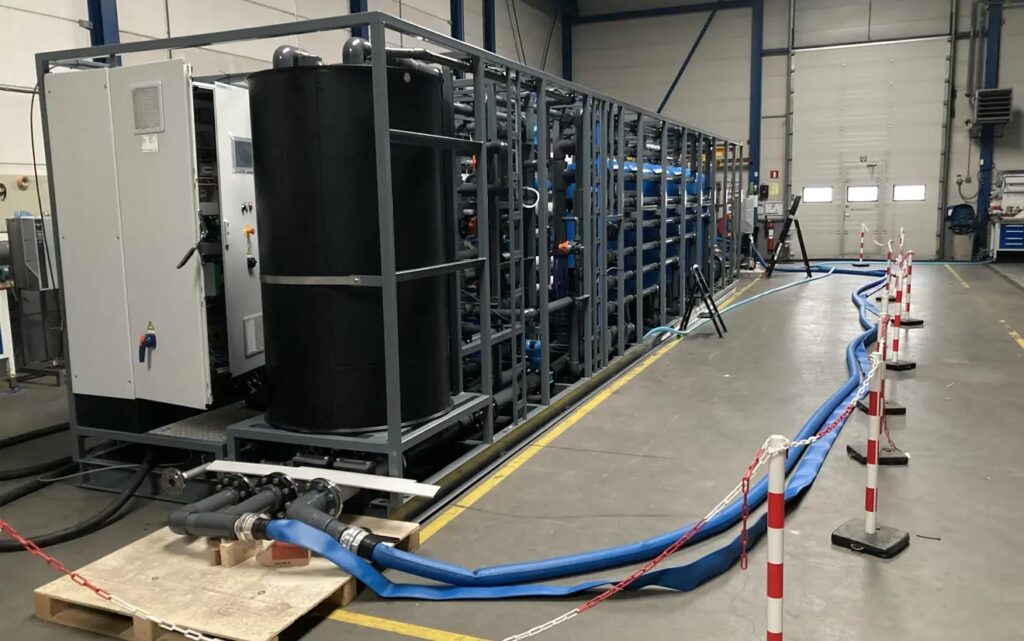

Verkefninu er nú lokið og sýna helstu niðurstöður að hægt er að nota pækilinn í forsöltun án þess að skerða gæði vörunnar, lit eða sýrustig (pH). Vinnslutilraunir sýndu sambærilegar niðurstöður hvað varðar saltmagn í lokaafurðinni og engin neikvæð áhrif á afköstin eða nýtingu. Í heildina gæti notkun þessa pækils dregið verulega úr saltinnflutningi til saltfiskframleiðslu, sem gæti leitt til umtalsverðrar lækkunar á kostnaði við framleiðslu saltfisks. Enn fremur sýndi vistferilsmat (LCA) fram á að með því að nýta pækilinn má draga verulega úr umhverfisáhrifum framleiðslunnar, samanborið við hefðbundinn pækil sem framleiddur er úr innfluttu salti. Það er auk þess áhugaverð niðurstaða úr verkefninu að það skuli vera ódýrara að framleiða ferskvatn á þennan máta en að kaupa það ofan af landi frá HS veitum.
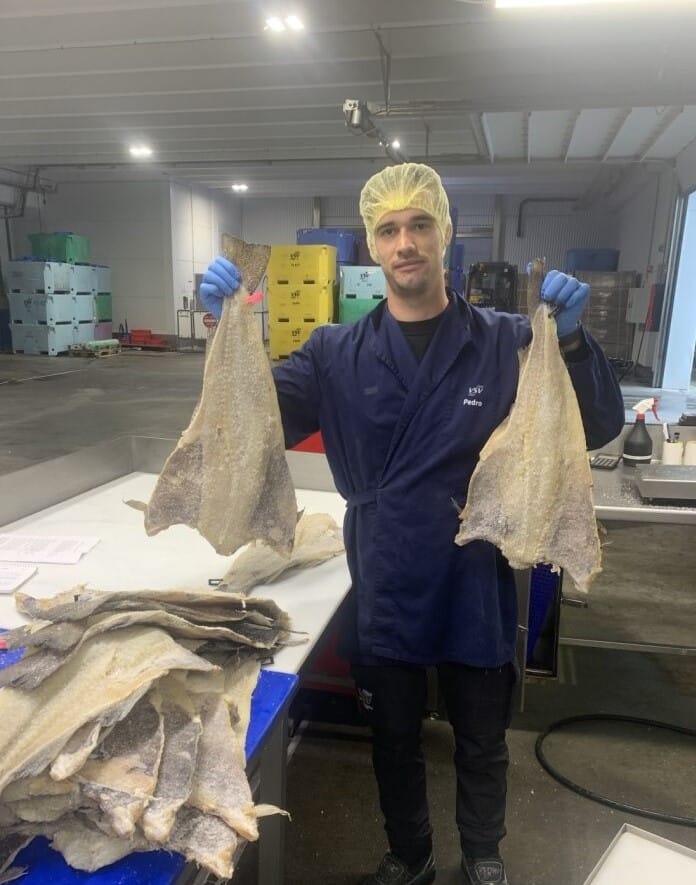
Verkefnið hefur sýnt fram á að notkun saltpækils sem fellur til við vatnshreinsun sé tæknilega raunhæfur, hagkvæmur og sjálfbærari valkostur við saltfiskframleiðslu. Frekari upplýsingar um verkefnið má finna í lokaskýrslu verkefnisins sem nálgast má here, á heimasíðu verkefnisins or at willum@vsv.is , cecilie@matis.is or jonas@matis.is
Frá 1968 þegar vatnsleiðsla var fyrst tengd á milli Vestmannaeyja og fastalandsins hafa Eyjabúar reitt sig á aðgengi að ferskvatni í gegnum plastleiðslur sem liggja á hafsbotni. Vestmannaeyingar og atvinnulífið á Eyjunni voru þó óþyrmilega minntir á það óöryggi sem felst af því að vera háðir slíkri tengingu varðandi lífsnauðsynjar 2023 þegar skemmdir urðu á leiðslunni. Í framhaldi fjárfestu fyrirtæki á svæðinu í vatnshreinsibúnaði sem framleitt getur ferskvatn úr sjó. Vinnslustöðin í Vestmannaeyjum fjárfesti meðal annast í slíkum búnaði, og í framhaldi kom upp sú hugmynd hvort ekki væri hægt að nýta þá hliðarstrauma sem til verða við ferskvatnsframleiðsluna. En vatnshreinsistöðin síar steinefni og óhreinindi úr sjónum, þannig að eftir verður hreint vatn. Meðal þeirra steinefna sem síast frá er salt, en Vinnslustöðin er á sama tíma að flytja inn töluvert magn af salti til saltfiskframleiðslu. Það lá því beinast við að kanna möguleikann á að nýta saltpækil sem fellur til við ferskvatnsframleiðsluna fyrir saltfiskvinnslu. Vinnslustöðin fékk því Matís með sér í lið til að kanna fýsileika þess, og fengu auk þess stuðning frá LÓU sjóðnum til að fjármagna hluta af verkefninu. Markmið verkefnisins var að kanna fýsileika þess að nýta salt frá ferskvatnsframleiðslunni til saltfiskframleiðslu m.t.t. matvælaöryggis, afkasta, kostnaðar og sjálfbærni.
Helstu niðurstöður sýndu að hægt er að nota pækilinn (RO-brine) í forsöltun án þess að skerða gæði vörunnar, lit eða sýrustig (pH). Vinnslutilraunirnar sýndu sambærilegar niðurstöður hvað varðar saltmagn í lokaafurðinni og engin neikvæð áhrif á afköstin. Í heildina gæti notkun þessa pækils dregið verulega úr saltinnflutningi til saltfiskframleiðslu, sem gæti leitt til umtalsverðrar lækkunar á kostnaði við framleiðslu saltfisks. Enn fremur sýndi vistferilsmat (LCA) fram á að með því að nýta pækilinn má draga verulega úr umhverfisáhrifum framleiðslunnar, samanborið við hefðbundinn pækil sem framleiddur er úr innfluttu salti.
Sýnt hefur því verið fram á í verkefninu að notkun saltpækils sem fellur til við vatnshreinsun sé tæknilega raunhæfur, hagkvæmur og sjálfbærari valkostur við saltfiskframleiðslu.
_____
Since 1968, when a freshwater pipeline was first connected between the Westman Islands and the mainland, the islanders have relied on access to freshwater through plastic pipelines that lie on the seabed. The inhabitants of the Islands and its industries were harshly reminded of the insecurity of being dependent on such a connection for their essential needs in 2023 when the pipeline was damaged. Subsequently, companies in the area invested in water treatment plants that can produce freshwater from seawater. Westmann islands largest seafood company and the largest workplace, Vinnslustöðin (VSV) invested in such equipment, and subsequently the idea arose of whether it would be possible to utilize the side streams that are created during the production of freshwater. But the water treatment plant filters minerals and impurities from the sea, so that only clean water remains. Among the minerals that are filtered out is salt, but VSV is at the same time importing considerable amounts of salt for its saltfish production. The focus was therefore on investigating the possibility of using the salt brine that is generated from the freshwater production for saltfish processing. VSV therefore brought Matís on board to investigate its feasibility and also received support from the LÓU Fund to finance part of the project. The aim of the project was to investigate the feasibility of using salt from freshwater production for saltfish production in terms of food safety, yield, cost and sustainability.
The main results showed that the brine can be used in pre-salting without compromising the quality of the product, colour or pH. The processing experiments showed comparable results in terms of salt content in the final product and no negative impact on performance or yield. Overall, the use of the brine could substantially reduce salt imports for saltfish production, which could lead to a significant reduction in the cost of producing salted fish. Furthermore, a life cycle assessment (LCA) showed that by utilizing the brine, the environmental impact of production can be substantially reduced, compared to traditional brine produced from imported salt.
The project has therefore demonstrated that the use of salt brine generated during water purification process using reverse osmosis is a technically feasible, economical and more sustainable alternative to current practises for saltfish production.
View report
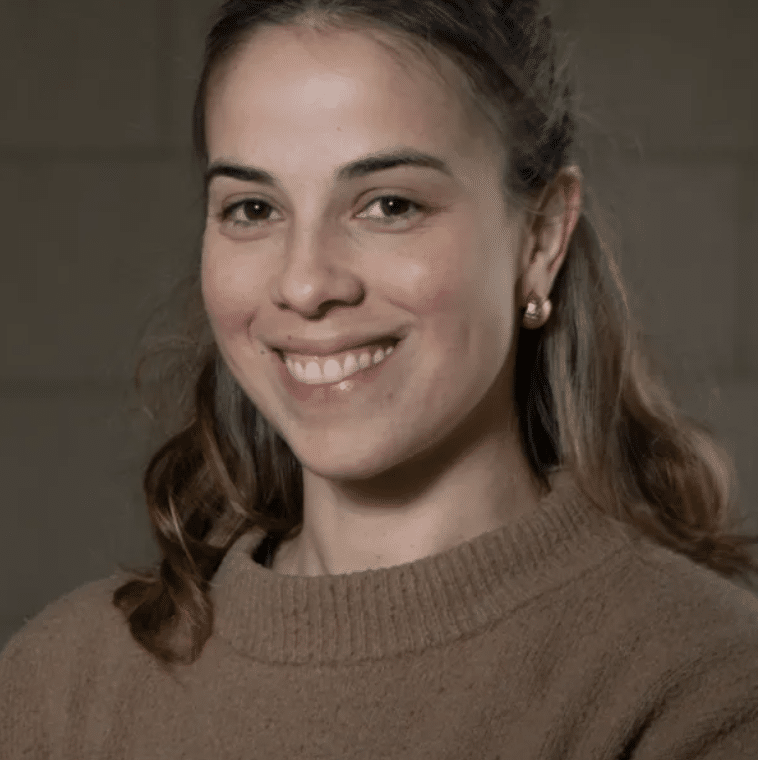
Þriðjudaginn 16. desember 2025 varði Clara Maria Vasquez-Mejia doktorsritgerð sína í matvælafræði við Matvæla- og næringarfræðideild Háskóla Íslands. Ritgerðin ber heitið: Umhverfisáhrif eldis á Atlantshafslaxi á Íslandi, með áherslu á vatnsskortsfótspor. Environmental impacts of Atlantic salmon aquaculture in Iceland, with focus on water scarcity footprint.
Andmælendur voru dr. Alexis Laurent, prófessor við Danmarks Tekniske Universitet, DTU, og dr. Giacomo Falcone, dósent við Universita Mediterranea di Reggio Calabria.
Umsjónarkennarar og leiðbeinendur voru Ólafur Ögmundarson og María Guðjónsdóttir. Auk þeirra sátu í doktorsnefnd Alessandro Manzardo, dósent og Hildur Inga Sveinsdóttir, lektor.
Ingibjörg Gunnarsdóttir, prófessor og varadeildarforseti Matvæla- og næringarfræðideildar, stjórnaði athöfninni sem fór fram í Hátíðasal Háskóla Íslands.
Abstract
Fiskeldi gegnir sífellt mikilvægara hlutverki í alþjóðlegu fæðuöryggi. Sérstaklega hefur eldi á laxi vaxið hratt á Íslandi, meðal annars vegna aðgengis að hreinu vatni og endurnýjanlegri orku. Í þessari doktorsrannsókn var vistferilsgreiningu (Life Cycle Assessment, LCA) beitt til að meta umhverfisáhrif íslensks laxeldis, með sérstakri áherslu á vatnsskort og kolefnisspor í gegnum alla virðiskeðjuna. Rannsóknin samanstóð af þremur vísindagreinum. Sú fyrsta var kerfisbundin yfirlitsgrein á LCA-rannsóknum á fiskeldi með áherslu á magnbundna vatnsnotkun. Í annarri greininni var vistferilsgreiningu beitt frá vöggu til eldisstöðvar á landeldi á laxi á Íslandi, þar sem áhrif raforkublöndu voru könnuð ásamt mögulegum umhverfislegum ávinningi af nýtingu úrgangs frá fiskeldi sem áburð var metinn út frá á innihaldi hans af köfnunarefni, fosfór og kalíum (NPK). Í þriðju greininni var að lokum beitt landsvíslegri greiningu þar sem innbyggt vatns- og kolefnisspor fóðurhráefna sem notuð eru í land- og sjóeldi á laxi var borið saman, með tilliti til rekjanleika hráefna til upprunalanda þeirra. Niðurstöðurnar sýna að þótt Ísland njóti góðs af endurnýjanlegri orku og gnægð ferskvatns leggur fiskeldisiðnaðurinn óbeint umhverfisálag á önnur lönd í gegnum framleiðslu og innflutningi á fóðri frá öðrum löndum. Rannsóknin undirstrikar mikilvægi þess að velja sjálfbærari innihaldsefni fóðurs og þess að taka vatnsskort og tengd umhverfisáhrif með í reikninginn við þróun framtíðarfiskeldis á Íslandi.
Growing fish consumption worldwide has driven fish processors to introduce innovative seafood products with extended shelf-life and desirable organoleptic properties. Atlantic mackerel (Scomber scombrus) enters the Icelandic catching waters during a well-fed and fatty stage during summer, providing several challenges for its processing and utilization for human consumption. This study investigates the impact of freezing this well-fed and fatty deep-skinned Atlantic mackerel fillets before and after smoking, prior to canning to assess its suitability for processing of smoked and canned products for human consumption. Physicochemical and organoleptic properties of canned fillets were evaluated after 1 and 12 months of storage at room temperature. The formation of primary oxidation products (peroxide value, PV) was similar in both cases, while the secondary oxidation products (thiobarbituric acid reactive substances, TBARS) were notably lower when the fillets were smoked before freezing. Additionally, PV and TBARS levels were significantly reduced in all canned mackerel samples after prolonged storage compared to those stored for a shorter period. However, lipid oxidation and hydrolysis were minimal after both treatments, indicating that these factors do not pose a significant issue for these products. Instrumental texture analysis and product evaluation of canned mackerel revealed more favourable characteristics (firmer fillets, nor mushy) when fillets were frozen first and then hot-smoked (FSC). In contrast, fillets that were smoked first and then frozen (SFC), irrespective of the canning storage time, exhibited a mushy texture and appearance, which could negatively impact consumer acceptance. Therefore, freezing prior to hot-smoking may represent a better option if the fillets are intended for canning.







